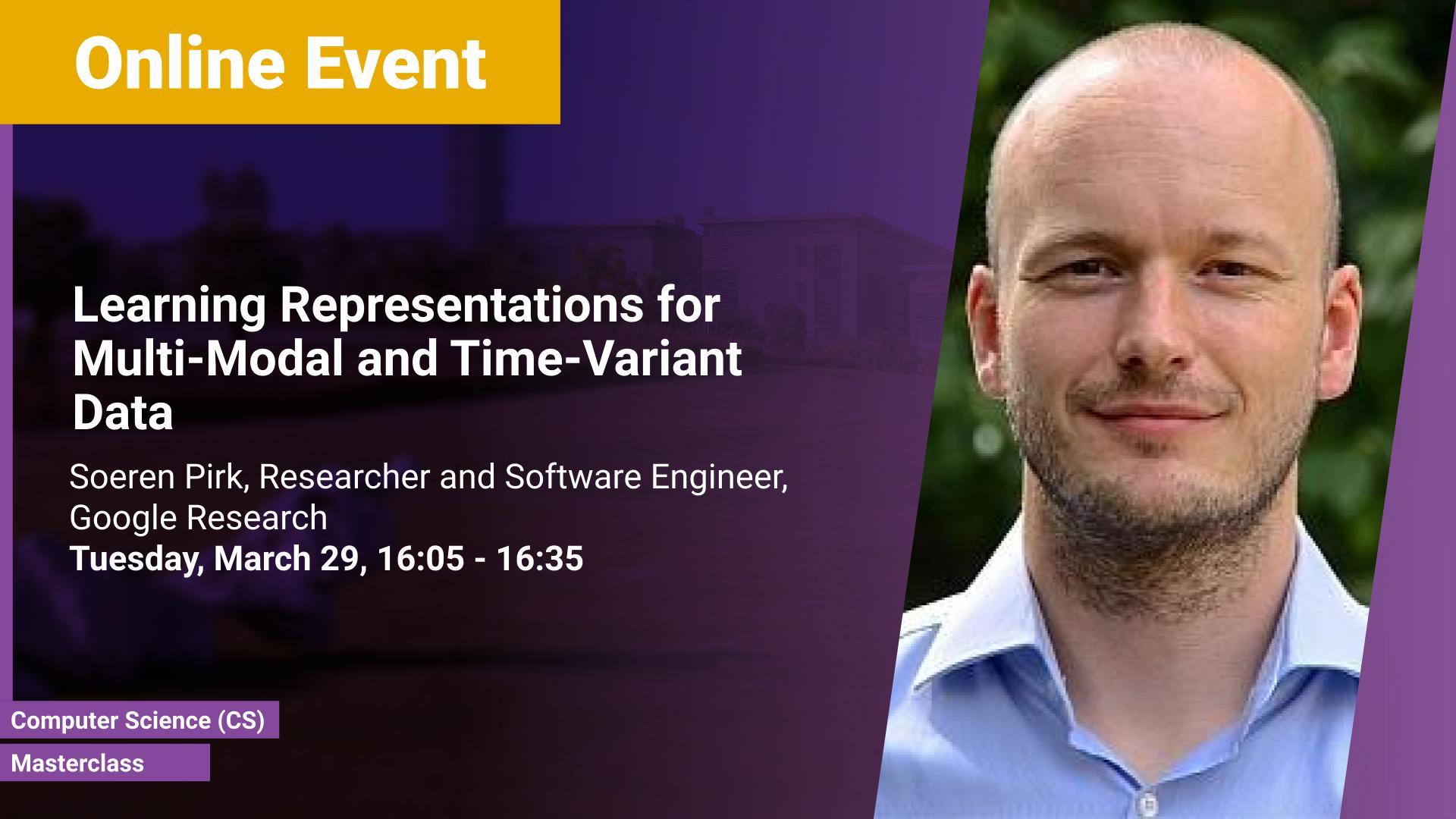Masterclass in Visual Computing
Abstract
By combining research from computer graphics, computer vision, and machine learning, Dr. Soeren Pirk's work focuses on developing representations for dynamic and time-variant phenomena. Finding representations to analyze and synthesize objects and scenes has been a long-standing research effort of visual computing. For many application domains -- such as robotics or augmented reality -- more evolved representations are needed to not only understand and generate static scenes, but also to model the dynamics of objects, the interactions of agents with their environment, and -- more generally -- the physics of various phenomena. This talk will summarize his research efforts towards this goal by focusing on three main topics: First, he will discuss representations for understanding human-object interactions and navigation and manipulation tasks in the context of robotics. Second, he will introduce a number of representations to model objects, scenes, and agent behavior. These representations allow us to classify shapes, to reconstruct objects, and to generate dynamic scenes, which is important for applications in computer graphics. Finally, he will present the usefulness of multi-modal representations -- learned by employing unsupervised or multi-task learning schemes -- for understanding objects, reconstructing scenes, and for generating dynamic behavior of agents.
Brief Biography
Soren is currently a Researcher and Software Engineer in Google's Research and AI team in Mountain View, California. He is working on research problems in machine learning, computer vision, and computer graphics. Prior to this role, Soren was a Visiting Assistant Professor in the Computer Science Department at Stanford University where he worked on geometric modeling, physical simulations, and computer graphics. He was associated with the Stanford Artificial Intelligence Laboratory (SAIL) and the Max Planck Center for Visual Computation and Communication (MPCVCC) in Saarbrucken, where he was leading the geometric modeling group. Soren received his PhD in computer graphics from the computer science department at the University of Konstanz. He worked at several research labs around the world, including the Shenzhen Institute of Advanced Technology (China), the Human Interface Technology Laboratory (New Zealand), Microsoft Research (USA), and EsriGIS (Switzerland). His research focus has been on developing methods for physical simulations, procedural modeling, and real-time computer graphics in combination with machine learning. This includes topics such as understanding physical human-object interactions, modeling natural phenomena, and learning representations from multiple data modalities.
Soren has won two best paper awards from Eurographics and his work has been captured by popular media formats such as "Two Minute Papers" and TechCrunch. He also is an Associate Editor for Computer Graphics Forum and IEEE Computer Graphics and Applications.
